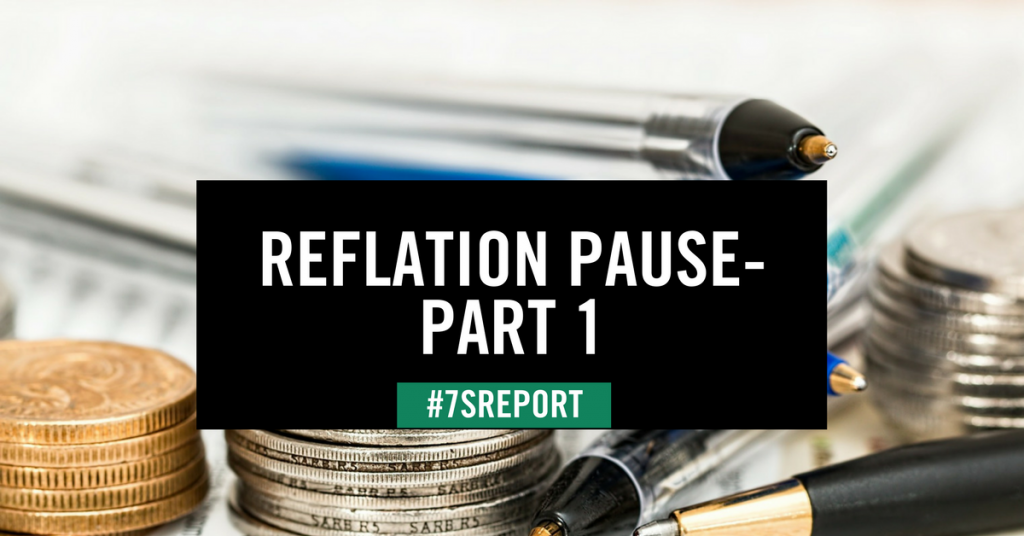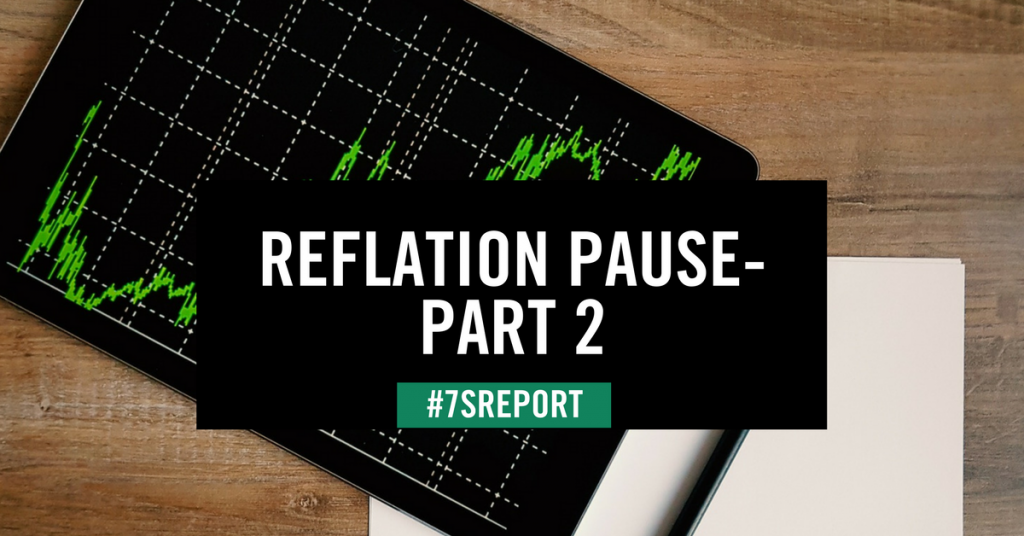
The Sevens Report is the daily market cheat sheet our subscribers use to keep up on markets, leading indicators, seize opportunities, avoid risks and get more assets. Get a free two-week trial with no obligation, just tell us where to send it.
Why Is the Reflation Rebound Pausing? Because It Should. Here’s Why…
After surging basically from Sept. 11 through Friday’s jobs report, the reflation rebound has taken a pause for the last few days, and I wanted to provide a comprehensive update of:
1) Where we are in the reflation process and specifically the key catalysts that are looming in the near future and that are causing this pause, and
2) Explain why this reflation trade is different from others, and requires A) A more tactical allocation to get the outperformance we all want, and B) Greater patience on the part of longer-term investors before abandoning what’s worked so well in 2017 and allocating to more reflation-oriented sectors.
Due to space constraints, I’m going to break this up into two parts covered today and tomorrow.
Reflation Update Part 1: Where Are We, and What Will Decide Whether It’s Going to Continue?
We’ve been saying since the July Fed meeting that inflation was now the most important economic statistic, and that markets needed inflation to start to rise to help fuel a “reflation rebound.”
Well, during the week between Sept. 11 and Sept. 15, Chinese, British and US CPIs beat expectations, and combined with an uptick in global economic activity, caused tactical investors to rotate into tactical sectors (banks, energy, industrials, small caps, inverse bond funds).
And, we were early on identifying that switch, and our “Reflation Basket” has outperformed the markets since we re-iterated it for short- and medium-term investors in the Sept. 21 Report.
However, also in that Report we cautioned longer-term and less-agile investors to wait for clear confirmation that the reflation rebound had started, and we identified two keys. The first was the KBW Bank Index closing above 100. This occurred both Monday and Tuesday. The second was the 10-year yield breaking above 2.40%.This has yet to happened.
So, while much of the mainstream financial press is now pumping the reflation trade (a month after it started) we’re acknowledging that it’s paused. Practically, that means we’re holding (not adding to) our “Reflation Basket” of KRE/KBE/IWM/EUFN/XLI/TBT/TBF, and think shorter-term/tactical investors should too.
I say that because I believe the first stage of this reflation trade is now complete, and in the next three weeks we will see two key events that will decide whether this reflation extends into November, pauses longer or potentially back tracks.
Near-Term Reflation Catalyst #1: ECB Meeting. Thursday, Oct. 26. Why it’s Important: As we’ve covered, markets have enjoyed a “virtuous” reflation recently because 1) Economic data has been good, but 2) Not so good that it’s causing global central banks to hike rates faster than expected.
Markets have a general expectation of what ECB tapering of QE will look like (somewhere around 20B per month) but we’ll get the details at this October ECB meeting.
If the ECB is more hawkish than expected, that could potentially send yields too high, too fast, and kill the
“virtuous” reflation. If that happened, banks and inverse bond ETFs would rally, but everything else would fall.
Conversely, if the ECB is too dovish, then markets might lose confidence in the reflation itself, and that would become a headwind.
Bottom line, the ECB needs to release a taper schedule that implies confidence in the economy and inflation, but that also isn’t so aggressive it kills the “virtuous” reflation rally.
Near-Term Reflation Catalyst #2: Fed Chair Decision.
The fact that President Trump will name a potentially new Fed chair in the next two weeks has been somewhat lost amidst the never-ending (and seemingly everescalating) Washington drama.
Right now, it’s widely believed there are three front runners: Kevin Warsh, Jerome Powell and Janet Yellen.
If Yellen is reappointed (and that’s seeming increasingly unlikely) then clearly that won’t cause any ripples in the reflation trade, and we can go back to watching inflation and yields. However, if one of the other two are appointed, things get interesting.
Warsh is considered the biggest “hawk” of the group,and if he becomes Fed chair we may see yields rise sharply, potentially endangering the “virtuous” reflation.
Powell is viewed as in the middle of the other two—not as dovish as Yellen, but not as hawkish as Warsh. But, it’s reasonable to assume that a Powell appointment would put at least some mild upward pressure on Treasury yields. It likely wouldn’t be enough to spur a killing of the “virtuous” reflation, but it would be cause for a pause in the move.
Cut through the noise and understand what’s truly driving markets, as this new political and economic reality evolves. The Sevens Report is the daily market cheat sheet our subscribers use to keep up on markets, seize opportunities, avoid risks and get more assets. Sign up for your free two-week trial today and see the difference 7 minutes can make.



